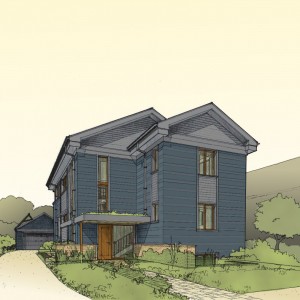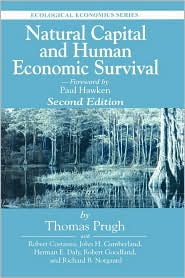 by Laura Haussmann, Chairperson of the OP Environment and Energy Commission
2012 is the fourth year in which the Environment and Energy Commission has given the Green Awards. These Awards recognize individuals, groups, and organizations that have demonstrated leadership as stewards of the Oak Park environment. Each award is given for specific deeds that embody and advance the Village’s of Oak Park mission of promoting a sustainable future. We hope that by celebrating these achievements, the inspiration will grow and become reality.
by Laura Haussmann, Chairperson of the OP Environment and Energy Commission
2012 is the fourth year in which the Environment and Energy Commission has given the Green Awards. These Awards recognize individuals, groups, and organizations that have demonstrated leadership as stewards of the Oak Park environment. Each award is given for specific deeds that embody and advance the Village’s of Oak Park mission of promoting a sustainable future. We hope that by celebrating these achievements, the inspiration will grow and become reality.
2012 Green Awards:
1. Robert Morris University in recognition of its sensitivity to Oak Park’s sustainability goals in the development of Eyrie Restaurant.
The Eyrie is the nest of an eagle… a Robert Morris University eagle that is. It is a supportive learning environment for aspiring chefs, providing seasonal dining for the community while embracing sustainable practices. The restaurant is the result of a collaborative student effort. They created the floor plan, marketing pieces, menu and business model to ensure Eyrie came to fruition.
The students chose environmentally friendly building materials and finishes, including recycled glass tiles, renewable cork flooring and bamboo wall paneling, and locally reclaimed wood for tables. This learning model continues on as you experience Eyrie for yourself. Visit the restaurant, help the students learn more, and perhaps learn a few things yourself. We would like to honor the students of Robert Morris University for the advancement of sustainability goals in the development of the Eyrie Restaurant.
2. Beye Elementary School in recognition of excellence in Zero Waste practices and 4th and 5th grade Green Ambassadors.
Beye School has worked collaboratively with Oak Park District 97's Zero Waste Elementary Schools since 2008 to divert more than 92 tons of solid waste from landfill. It has done this mainly by composting, increasing recycling, minimizing paper use, and creating reusable lunchrooms with the assistance of a high efficiency industrial dishwasher and no disposable utensils or trays. Compost is put back into our school gardens, and 4th and 5th grade Green Ambassadors apply to become green leaders for their school community, and conduct sustainability projects at the school and in the community.
Beye School Green Team representatives and students also have spoken at countless conferences, symposiums, and festivals to teach other schools, institutions, and individuals what it has learned along its green path, showing they are leaders in sustainability initiatives.
3. Sam and Phyllis Bowen in recognition of their creative use of space by building a vegetable and flower garden on the roof of their new garage.
When the Bowen’s garage was falling down, they decided that it was not only time to re-build it, but to innovate it, as well. They built a 190sf garden on top of the garage. Rather than make trips across town to the community garden, they added convenience and recycled water for irrigating with water collected from rain barrels. The garden is used to grow vegetables, flowers, and attracts local bees and birds.
We celebrate the Bowens for their innovation in taking a problematic garage and creating a 190 sf ecological paradise.
4. Debbie Becker for leading the way to change the village ordinance to legalize beekeeping.
Thanks to Debbie, backyard beekeeping is now legal. If you did not know, bees are the primary pollinator for most flowering plants. This includes much of our local flower and vegetable gardens and nearby agriculture. Over the past few decades, there has been a dramatic decline in bee colonies and populations. Some of this is because of epidemic disease, habitat disruption, and/or the use of pesticides within migratory areas.
Debbie now volunteers at local festivals to share her knowledge of beekeeping and encourage folks to get started. Thanks to Debbie for raising awareness of the plight of the local honeybee.
5. Jim Doyle & Ana Garcia Doyle in recognition of their commitment and tenacity in obtaining the first permit in Oak Park to install a greywater system.
Greywater is water from bathroom sinks, showers, washing machines and tubs. It is safe to collect and reuse (in theory) for a variety of purposes, from irrigating yards to flushing toilets and can reduce home water usage by 27-30%. But to say obtaining a permit for a greywater system is difficult would be a categorical understatement. Under the state's current plumbing code, which is drawn up by the Illinois Department of Public Health, greywater recycling systems are illegal, supposedly for safety and sanitary reasons. But the Doyles made their case for water conservation and set a precedent for greywater system permit seekers and we honor them for their achievement.
6. Park District of Oak Park in recognition of excellence in the renovation of Taylor Park.
The Taylor Park renovation has many wonderful new amenities, but there are a couple ‘green’ highlights of the renovation that the commission felt deserved recognition.
The park includes many mature tree root systems that grew under concrete and asphalt walkways. In order to best preserve the trees, a new system called root aeration was utilized. Root aeration is accomplished by clearing soil away from roots using high-pressured hoses and laying a root barrier fabric down before new asphalt or concrete is installed. This new process was chosen as an alternative to root pruning, which can cause tree decline or death.
Additionally, after heavy rain or snow melt, the park would experience standing water and swamp like conditions. So, they built a swamp! – er, wetland. This innovative idea now serves as an educational tool for residents and visitors of the many benefits of wetlands and demonstrates good storm water management practices.
In these respects, we honor the Park District of Oak Park for their stewardship.
7. Cary-Laszewski Residence in recognition of being the first house built in Oak Park to obtain LEED Platinum status.
This is Oak Park’s first LEED registered home. And it didn’t just make the cut, it went Platinum (the highest level). And though it was an entirely new home, they sought to seamlessly blend the new home into the existing historic neighborhood. The goal of this project was to prove that a home can be new, eco-friendly and efficient and at the same time traditional and in keeping with the character of the community. Features of the project include recycling and re-use of the materials from the original home, locally sourced materials, geo-thermal heating and cooling, enhanced formaldehyde-free insulation, high efficiency appliances, finishes and decorative treatments with recycled content, reclaimed wood, and many more. They have set the bar high and now serve as a wonderful example of green home building in our community.
Congratulations to the recipients of the 2012 Oak Park Green Awards! Thank you for your commitment to sustainability!
The Environment and Energy Commission of Oak Park serves in two capacities: The first is to advise the Village regarding implementation of environmentally conscious policies to improve the quality of life for all residents. The second is to encourage residents through various environmental awareness initiatives to make healthy, smart, and environmentally conscious decisions that conserve and protect natural resources. The EEC believes that the duality of these actions assists a strong local economy and improves the quality of life for all Oak Park residents.
Special thanks go to Karen Rozmus, our Village Liaison, and to two excellent Commissioners – Betsy Williams and Bob Peterson, who led the efforts in developing and organizing these awards.













